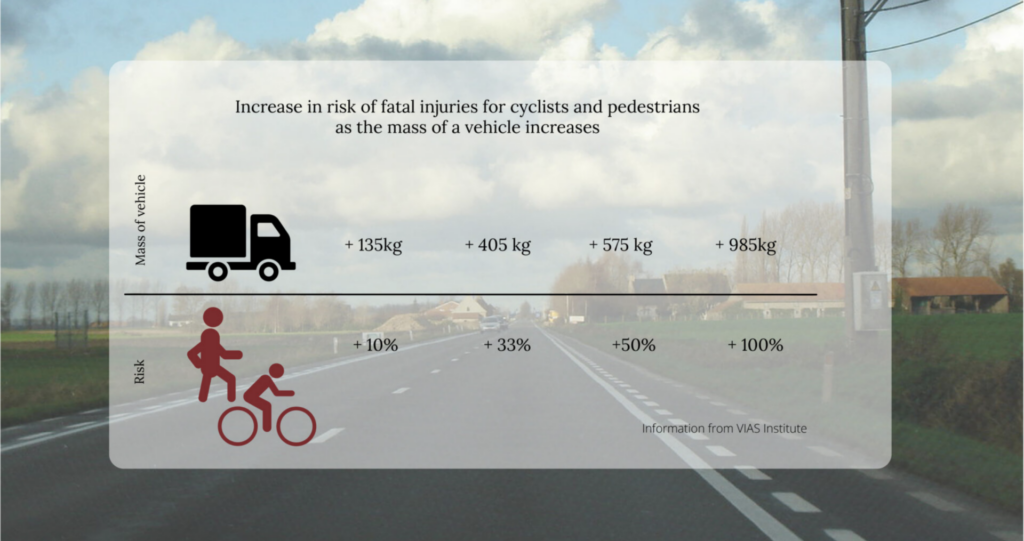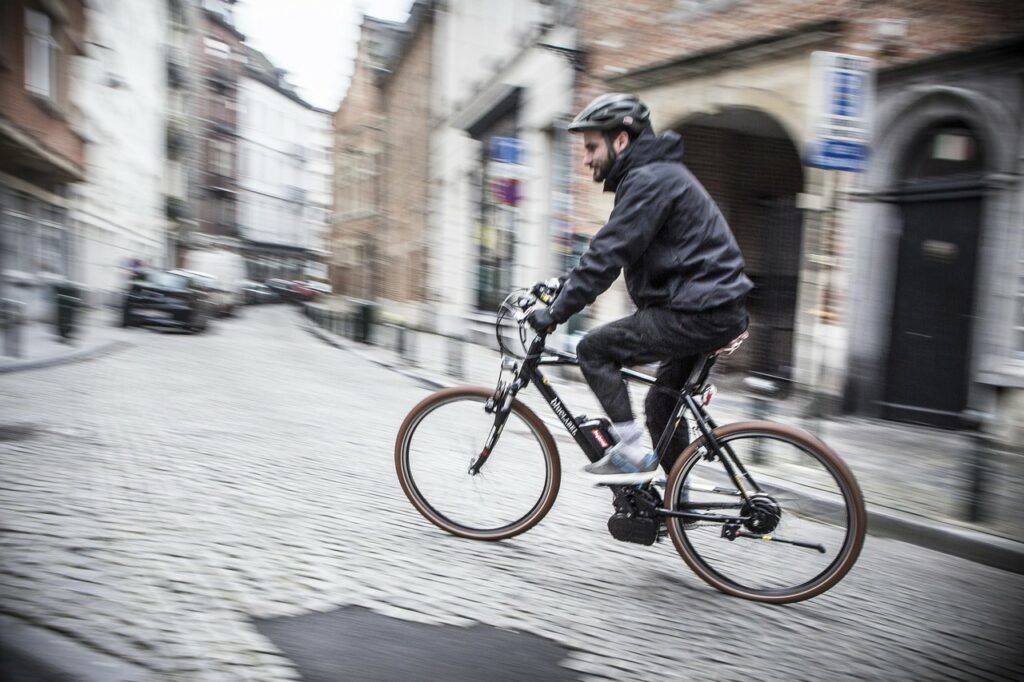The heavier the car, the greater the risk of death for vulnerable road users such as cyclists and pedestrians, a new study by the Vias traffic safety institute shows.
The risk of dying is 50% greater for vulnerable road users that are hit by a vehicle weighing 1800 kilograms rather than 1200 kilograms, while the risk of serious injury increases by 10% when the vulnerable road user is hit by a vehicle with 200 horsepower (HP) compared to a model with 120 HP.
The aim of the Vias study, which for the first time cross-referenced accident data with the database of registered vehicles, was to identify the vehicle characteristics that increase the impact of accidents involving pedestrians and cyclists.

Credit: TBT/ Vias
Meanwhile, the risk of being killed during a road accident is four times greater in a zone where the speed limit is 50 km/h compared to a zone where the speed limit is 30 km/h. The risk grows to 30 times higher in a zone with a speed limit of 90 km/h compared to a zone with a speed limit of 30 km/h.
Age of car, driver and victim
Aside from the weight and power of a vehicle, its age also has an impact on the severity of injuries to pedestrians and two-wheelers when they are hit, albeit slightly less.
"The older the vehicle, the higher the likelihood of more serious injuries. The risk of serious injury is 4% higher for a 10-year-old vehicle compared to a 5-year-old vehicle."
Finally, the age of the driver and the person hit by the car also plays a big role in the impact. The average age of a car driver involved in an accident is 45 years. The average age of a vulnerable road user is 37.
Related News
- Points-based driving licence needed in Belgium to reduce traffic offences, Vias says
- Record numbers of drivers under the influence of drugs
In general, the older the driver, the lower the risk that the vulnerable road user is killed. "For example, the risk of death for a pedestrian or cyclist decreases by 12% when the driver is 30 years old, compared to a collision with a driver who is 20 years old," the Vias study read.
However, the opposite is true for the victim: the older the vulnerable road user, the greater the risk of death.
Vulnerable road users are also six times more likely to die in a vehicle collision at night in a place without public lighting, compared to a collision during the day. "This is probably because the driver only notices the vulnerable road user later in the dark and therefore has a collision at a higher speed than when it is light."
Vias said these results highlighted the need for increased protection for vulnerable road users.

